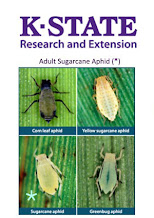Peonies
Last year when I interviewed for
the Post Rock Extension District Horticulture Agent Position, I was currently
in grad school at Purdue and drove back to stay with my grandparents for the
night before the interview. When I went to leave the next morning, my grandpa
had cut a peony blossom from their flower bed and placed it in my car. I had a
partially-full bottle of water from the day before that I used as a makeshift
vase while I drove to Beloit and did the interview. Little did I know the good
luck that peony would bring me! Since then I have had a soft spot for peonies.
I have
always thought peonies were a pretty flower, but paid little attention to their
care until I received some peony roots from K-State’s Horticulture Research Center
last fall that they were no longer using in their research trials.
The best
time to plant peonies is in the fall. Dig the hole deep enough so that you can
put a little dirt back in to form a cone for the roots to sit on, but far
enough down that the whole root will be covered by at most 1 inch of soil. The
pinkish buds on the root need to be facing up.
Existing peonies often look a
little bedraggled by this time of year and gardeners may want to cut them back.
That will not be a problem with this perennial. Peonies are essentially dormant
by September 1, even though leaves may still be green. Cut leaves off close to
the ground and compost or discard.
 Unless your peonies were plagued
by peony leaf blotch, commonly known as peony measles, this summer, like mine
were. This disease, caused by the fungus Cladosporium paeoniae, is not usually a
problem in our area, but was this year due to the wet spring we had. Peony
measles can also be a problem if overhead or sprinkler irrigation is used on
the peonies. The disease causes reddish spots on the leaves, and in severe
cases (like mine!), it can rot away the buds and prevent flower bloom. I only
had a handful of blooms before the disease knocked out the remaining buds.
Unless your peonies were plagued
by peony leaf blotch, commonly known as peony measles, this summer, like mine
were. This disease, caused by the fungus Cladosporium paeoniae, is not usually a
problem in our area, but was this year due to the wet spring we had. Peony
measles can also be a problem if overhead or sprinkler irrigation is used on
the peonies. The disease causes reddish spots on the leaves, and in severe
cases (like mine!), it can rot away the buds and prevent flower bloom. I only
had a handful of blooms before the disease knocked out the remaining buds.
If your peonies also suffered
from the “measles” this year, it is important that you cut off the plant down
to the ground. Discard or burn the plant matter. Do not add it to the compost
pile, where the fungus can overwinter.
If peony measles have been a
problem in your garden regularly in the past, you might consider planting a
resistant variety, using fungicide when the plants are small, and thinning the
plants or providing more space between plants to get better air flow. Good
airflow and drip irrigation will help to keep the leaves dry and prevent the
fungus from having its ideal environment.
RESOURCES:
For more information on dividing
existing peony plants, whether to relocate them in your own garden or share some
with friends, check out the video by Kansas Healthy Yards and Communities: https://www.youtube.com/watch?v=C6Ts6tcdljI
Clemson University Extension has a great publication with
more detailed information on peony care: http://www.clemson.edu/extension/hgic/plants/pdf/hgic1170.pdf
Check out the Prairie Bloom Perennial Flowers list for
recommended peony varieties: http://www.bookstore.ksre.ksu.edu/pubs/MF2772.pdf









